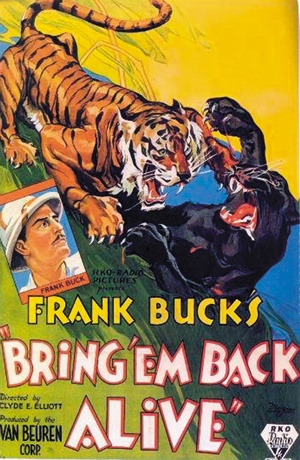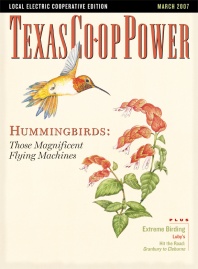Bring ‘em back alive.” That was the golden rule of wildlife adventurer Frank Buck. The native Texan practiced what he preached in Borneo, Malaya, Sumatra and other exotic locales, capturing hundreds of thousands of animals for zoos, circuses and private collectors. Buck, whose exploits were recounted in books, movies and radio programs, became as renowned in his day as Charles Lindbergh, Admiral Richard E. Byrd or Babe Ruth.
Born in 1884 in a Gainesville wagon yard and raised in Dallas, Buck grew up fascinated by the birds, snakes and other wild critters that inhabited his homeland. Too restless for learning indoors, Frank quit school after the seventh grade. Sometime around the turn of the century, he signed up for a modern cattle drive, “punching” cows on a train from San Angelo to Chicago.
Buck’s Windy City adventures included a marriage, at age 17, to a 41-year-old drama critic for the Chicago Daily News. A steady course of barroom brawling likely toughened his constitution for the tight jungle scrapes he later encountered. In 1911, Buck took $4,500 in poker winnings to South America, bought a load of tropical birds and sold them at a nice profit in New York. Within a few years, he was trekking exotic wilds from a base in the Raffles Hotel in Singapore, and by the 1920s, Frank Buck from Gainesville was the man to see if you needed a tiger or an elephant or a honey bear. From pythons to orangutans, king cobras and kinkajous, in 1922, Buck provided 500 specimens for the Dallas Zoo.
After some business ups and downs during the Roaring Twenties (including a typhoon that wiped out one load of animal cargo in 1928) and a second marriage, Buck’s profile as a cultural hero grew with the 1930 publication of his first book, Bring ’Em Back Alive, and it grew even more with the film version two years later. Seven more books followed. Ruggedly handsome in his signature pith helmet, Buck even played himself in films including Wild Cargo and Fang and Claw. No matter how far-flung his travels or how great his fame, however, Buck at times proved that you can’t take Texas out of the boy, using a Lone Star lasso to capture his first python.
Millions toured Buck’s “jungle camps” at world’s fairs in Chicago and New York. Legions more saw him riding elephants in the Ringling Bros. and Barnum & Bailey Circus. Buck’s adventures provided an escape during the Depression, but the mystique continued after his death in 1950.
Steven Lehrer, a professor of oncology at Mount Sinai School of Medicine, first read a Buck book at age 10. In 2000, the doctor compiled a new edition of selected tales, Bring ‘Em Back Alive: The Best of Frank Buck. (Texas Tech University Press has just released a paperback edition.)
Lehrer believes Buck, a pioneer wildlife conservationist, was ahead of his time in the treatment of animals. The care he provided often put him at risk, such as the time a 600-pound tapir, a normally docile species, turned on him as he salved the animal’s back.
Still, reaching for his pistol remained a last resort, and the book only relates one such instance, when Buck had to shoot a python that was about to devour a hand and squeeze the life out of his arm. “I am proud of the fact that in my whole career of dealing with wild creatures I have never willfully or unnecessarily harmed or injured a single one,” wrote Buck. “I have made it my business to bring them back alive, for I have only feelings of kindness for every creature that breathes on this Earth.”
Those feelings show in the stories, as Buck describes the animals as individuals with distinct personalities. An orangutan named Gladys, for instance, enjoyed “washing” fabrics, mimicking the actions of laundry workers she’d observed. An affectionate creature, Gladys liked to embrace Buck, and she “got to be so much fun” that he often drove her around Singapore.
In 1948, two years before his death in Houston from lung cancer, Buck visited his birthplace for the dedication of Gainesville’s Frank Buck Zoo and the Frank Buck Zoological Society. As he walked the streets of his early boyhood, the world-famous adventurer was likely reminded of these words from his 1941 autobiography, All in a Lifetime: “I was now Frank Buck, who had achieved fame in the jungles, in motion pictures, in literary circles, and in the show world. Yet in my heart I am still the small town Texas boy who loves birds better than anything else on earth.”
The Frank Buck Zoo is at 1000 W. California St. (at I-35) in Gainesville. For more information, call (940) 668-4539.
The area around Gainesville is served by Cooke County Electric Cooperative.
Gene Fowler is co-author of Border Radio: Quacks, Yodelers, Pitchmen, Psychics, and Other Amazing Broadcasters of the American Airwaves, as well as of the production, “The Border Radio Show: The Big Jukebox in the Sky.”


